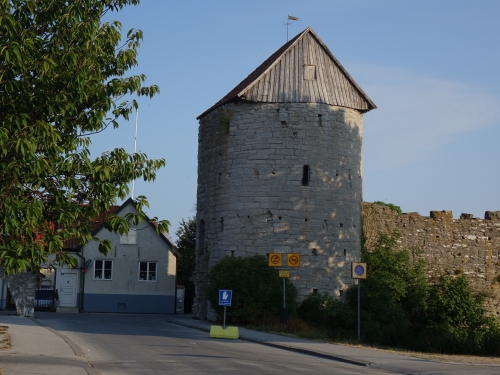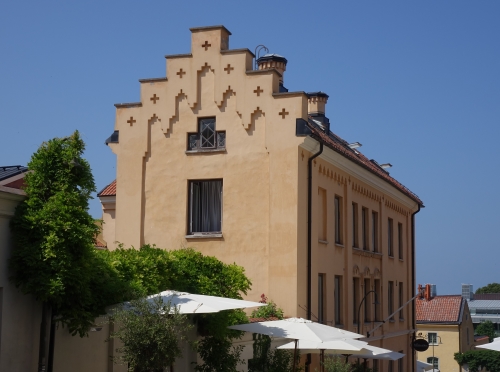Blog WHS Visits
WHS #671: Visby
With my visit to Visby over the past weekend, I finally ‘finished’ Sweden. I did so on a nightly public transport expedition of over 1,600 km: bike from my house to local train station (5 min) – train to airport (45 min) - fly Amsterdam to Stockholm (1.5 hr) – pricey Arlanda Express train to Stockholm central station (20 min) – Batbussen to Nynäshammn (45 min) – ferry to Visby (3h15 min), arriving at 5.45 in the morning. If you ever end up on the streets of Visby via the same early ferry, I’ve got two practical tips for you: (1) Marthas café opens early for breakfast, at 6 am on weekdays and 8 am on Saturday, and (2) there are hammocks for public use along the beach road next to the botanical garden to catch up on your sleep.

After breakfast and having tried to get some rest on a park bench (I only discovered the hammocks later in the day), I started my visit properly with a walk along the exterior of the city walls. They do not look that impressive coming from the harbour, but that's because it is the only part of the structure where the full circle is interrupted. The other 3.44 km of the in total 3.6 km is intact. The wall, which is up to 10 meters high, is reinforced every few meters by a tower. 36 of those are still standing and that adds to the wall’s majestic look. Alternating with the slender towers there are also lower 'saddle towers'. Especially these are struggling to stay upright; from the end of the 19th century on they have been supported by iron poles.
The sandy walkway along the wall is just wonderful for an early morning walk. I can imagine that if you live here you do this loop every day: I met many people jogging or walking their dogs. This surely must be among the Top 3 of city walls on the List, rivalling the one at Carcassonne with its numerous towers and height.

Within the city walls my first stop was the Gotland Museum. It shows the history of the island where Visby is located. It has exhibitions across 3 floors, but the best is already right at the entrance: a hall full of rune stones. Well-known from the rest of Scandinavia of course, they often only have inscriptions. But the Gotland ‘picture stones’ also have pictures and geometric motifs. Just like with petroglyphs, the people carved scenes from their daily lives into the stones. So there are many images of ships here! The museum also exhibits wooden sculptures from Visby's churches.
The old town had no less than 12 churches in its heyday. These arose by the grace of the international contacts of its inhabitants: it apparently also helped your commercial position to say that you’re a Christian. Nowadays there is only one in use, the big 13th century Domkyrka. The rest of the churches still adorn the streets in a dilapidated state, which is a somewhat odd sight as they would have been cleared away over the centuries in most cities. Most are also closed to the public because of their condition. But I can recommend a visit to the double church of St. Hans and St. Peters where a cafe has built its terrace among the church ruins.

I had expected more from the old houses and public buildings in Visby's town center. Or better said: I had expected something else. Most buildings date from the 17th, 18th and 19th centuries and are therefore far from medieval. I also did not discover one to enter (with the exception of the omnipresent souvenir shops selling woolen products). Visby is sometimes compared to Bruges, but this is a completely different cityscape and certainly lacks the cramped medieval housing conditions. It's also not comparable to the later Hanseatic towns such as Gdansk which I recently visited. It has a much more generic Scandinavian feel to it.
Els - 28 July 2018